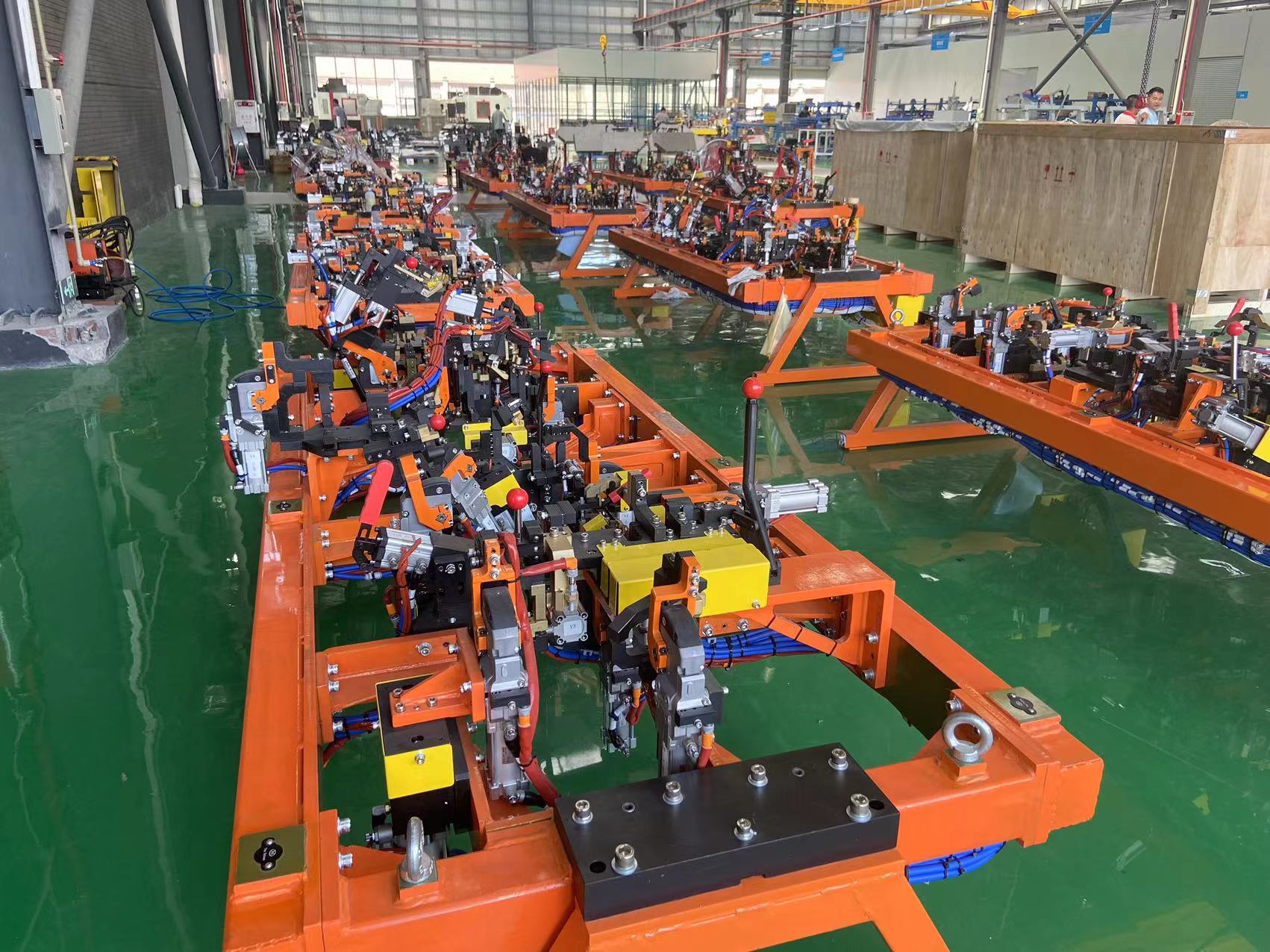To use welding jigs in automotive parts assembly, follow these steps:
Understand the Purpose: Welding jigs are designed to hold automotive parts in specific positions while they are being welded. These jigs ensure accuracy, consistency, and efficiency in the welding process.
Identify the Jig Design: Familiarize yourself with the design of the welding jig for the specific automotive part you are working with. Observe the clamping mechanisms, positioning references, and any adjustable features incorporated into the jig.
Prepare the Jig: Ensure the welding jig is clean and free from any debris that may interfere with proper alignment. Check that all clamping mechanisms are functioning correctly and any adjustable features are set according to the specifications.
Position the Parts: Place the automotive parts onto the welding jig according to the designated locations. Make sure they fit securely into the positioning references and engage any clamping mechanisms to hold them in place.
Verify Alignment: Use precision measuring tools to verify the alignment of the parts within the welding jig. Check dimensions and tolerances to ensure proper positioning before welding.
Welding Process: Carry out the welding process according to the specific welding procedure for the automotive parts. The welding jig will hold the parts in the correct position, ensuring accurate and consistent welds.
Unclamp and Remove the Parts: After welding, unclamp the automotive parts from the jig. Take care not to damage the newly welded areas, and allow time for the welds to cool before handling the parts.
Inspect the Welds: Inspect the welds for any defects, such as incomplete penetration or cracks. Perform visual inspections and any required non-destructive or destructive testing to ensure the weld quality meets the required standards.
Repeat the Process: If there are more automotive parts to be welded, repeat the process by placing them onto the welding jig and following steps 4 to 8.
By following these steps, welding jigs can effectively be used in automotive parts assembly, resulting in improved productivity, accuracy, and quality in the welding process.
Post time: Jul-25-2023



.png)
.png)